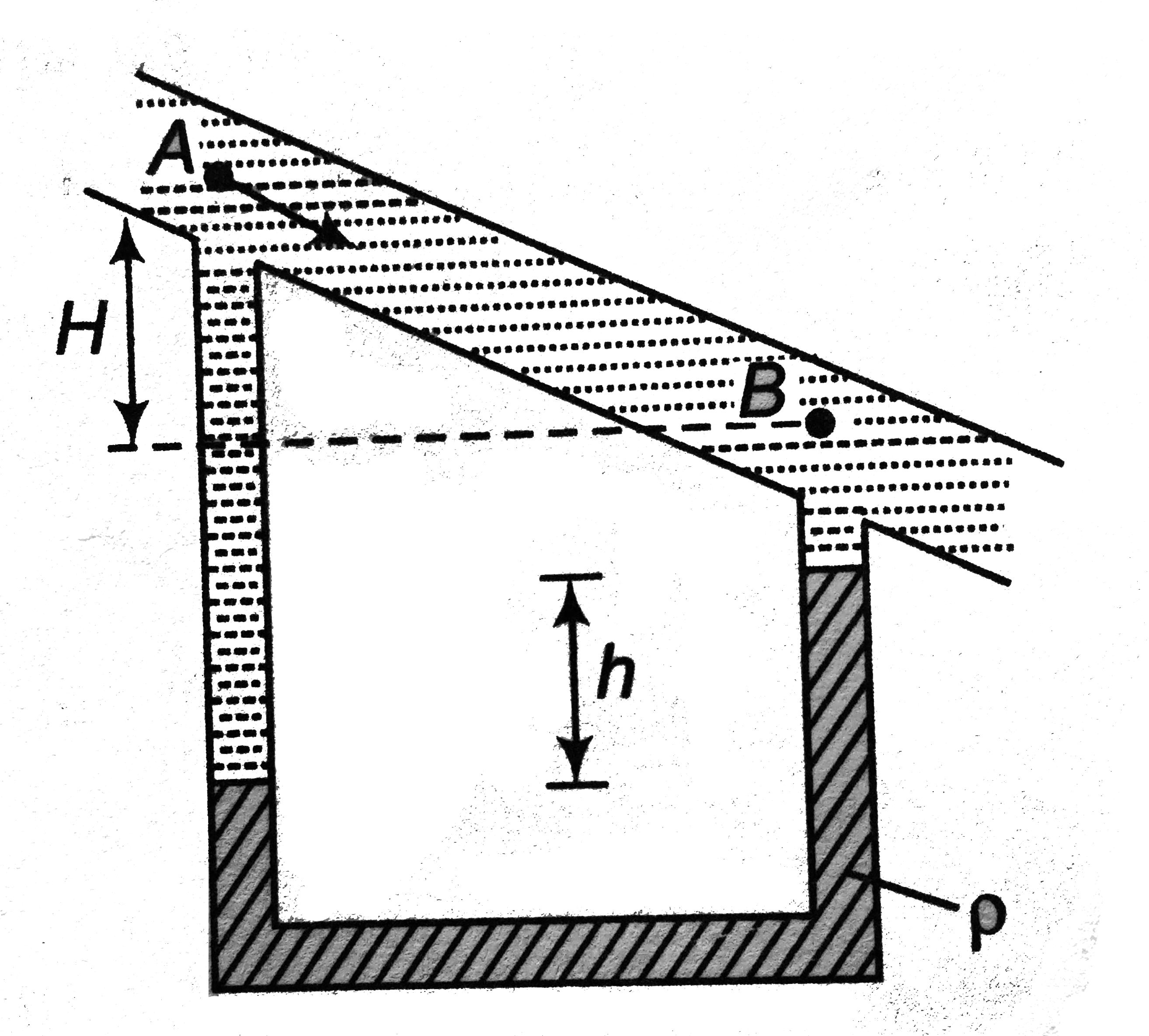A horizontal tube has different cross-sectional areas at point A and B .The diameter of A is 4 cm and that of Bis 2 cm. Two manometer limbs are attached at A and B. When a liquid of density 8.0 g cm−3 flows through the tube, the pressure difference between the limbs of the manometer is 8 cm. Calculate the rate of flow of the liquid in the tube .
Step by step video & image solution for A horizontal tube has different cross-sectional areas at point A and B .The diameter of A is 4 cm and that of Bis 2 cm. Two manometer limbs are attached at A and B. When a liquid of density 8.0 g cm^(-3) flows through the tube, the pressure difference between the limbs of the manometer is 8 cm. Calculate the rate of flow of the liquid in the tube . by Physics experts to help you in doubts & scoring excellent marks in Class 11 exams.
Topper's Solved these Questions
Similar Questions
The diameter of a horizontal tube at points A and B are 6 cm and 3 cm, respectively. Two manometer limbs are attached at A and B. When water is allowed to flow through the tube, pressure difference of 10 cm is noted between the limbs. Calculate the rate of flow of water in the tube.
View SolutionThe diameter of the throat of a venturimeter is 6 cm .when it is inserted in a horizontal pipe line of diameter 10 cm the pressure difference between the pipe and the thraot equal 8 cm of water . Calulate the rate of flow.
View Solution
Knowledge Check
- Question 1 - Select One
The figure shown a pipe of uniform cross-section inclined in a vertical plane. A U-tube manometer is connected between the point A and B. If the liquid of density ρ0 flows with velocity v0 in the pipe. Then the reading h of the manometer is
 Ah=0Bh=v202gCh=ρ0ρ(v202g)Dh=ρ0Hρ−ρ0
Ah=0Bh=v202gCh=ρ0ρ(v202g)Dh=ρ0Hρ−ρ0 - Question 2 - Select One
A horizontal tube has different cross sections at points A and B. The areas of cross section are a1 and a2 respectively, and pressures at these points are p1=ρgh1 and p2=ρgh2 where ρ is the density of liquid flowing in the tube and h1 and h2 are heights of liquid columns in vertical tubes connected at A and B. If h1−h2=h, then the flow rate of the liquid in the horizontal tube is
Aa1a2√2gha21−a22Ba1a2√2gh(a21−a22)Ca1a2 ⎷(a21+a22)h2g(a21−a22)D2a1a2gh√a21−a22
Two capillary tubes of equal length and inner radii 2r and 4r respectively are added in series and a liquid flows through it. If the pressure difference between the ends of the whole system is 8.5 cm of mercury, find the pressure difference between the ends of the first capillary tube.
View SolutionA pitot tube is fixed in a water pipe of diameter 14cm and difference of pressure by the gauge is 20cm of water column. Calculate the rate of flow of water.
View SolutionThe water flowing through the same tube having two different cross section areas has different flow rates .
View SolutionThe ratio of the radius of the tube of a venturimeter is η(η>1) . The ratio of the densities of the liquid in the manometer and the moving fluid is η1 . If the difference in heights of the liquid column in the manometer is h , find the minimum speed of flow of the fluid .
View SolutionA liquid rises to a height of 7.0 cm in a capillary tube of radius 0.1 mm. The density of the liquid is 0.8×103kgm−3.If the angle of contact between the liquid and the surface of the tube zero , calculate the surface tension of the liquid Given g=10ms−2.
View SolutionThere is a U-tube of different cross sectional area A=2.5cm2 and 4A of limbs fitted with the frictionless pistons each of mass m= 1 kg. An ideal liquid of density ρ=2000kg/m3 is filled in the tube and the tube is accelerated in horizontal direction with a constant acceleration 'a'. Find the value of acceleration 'a' (in m/s2 ) for which both pistons stay in the same horizontal level. The length of horizontal section of U-tube is l =1 m. (Take g=10m/s2 )
View Solution
